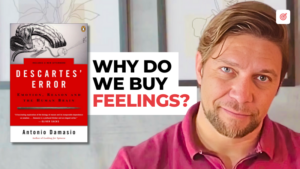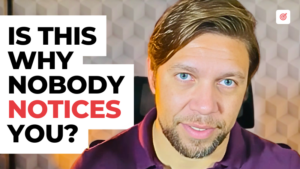A website without a blog won’t rank well on search engines for terms Buyer Personas are using to find what they need.
That’s the same as placing a store in a remote place of the town, instead of a city center or downtown.
What’s killing blogs is not their format. It’s only bad copywriting.
Today, we’re going to learn 7 blogging copywriting techniques to turn your website visitors into loyal customers.
Listen to know more about:
- Copywriting Technique #1: Numbered Titles
- Copywriting Technique #2: Questions
- Copywriting Technique #3: Specificity
- Copywriting Technique #4: From Known to Unknown
- Copywriting Technique #5: The Uncertain Future
- Copywriting Technique #6: Tense & Relief
- Copywriting Technique #7: KISS
Downloadable content in this episode:
Useful links in this episode:
Episode Transcript
[fusebox_transcript]




